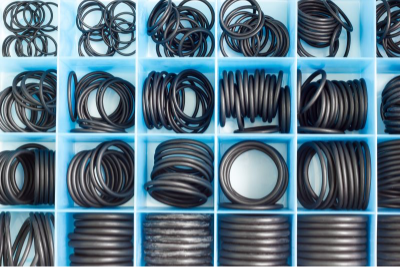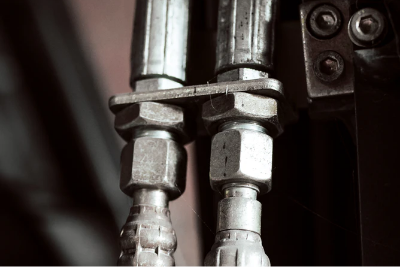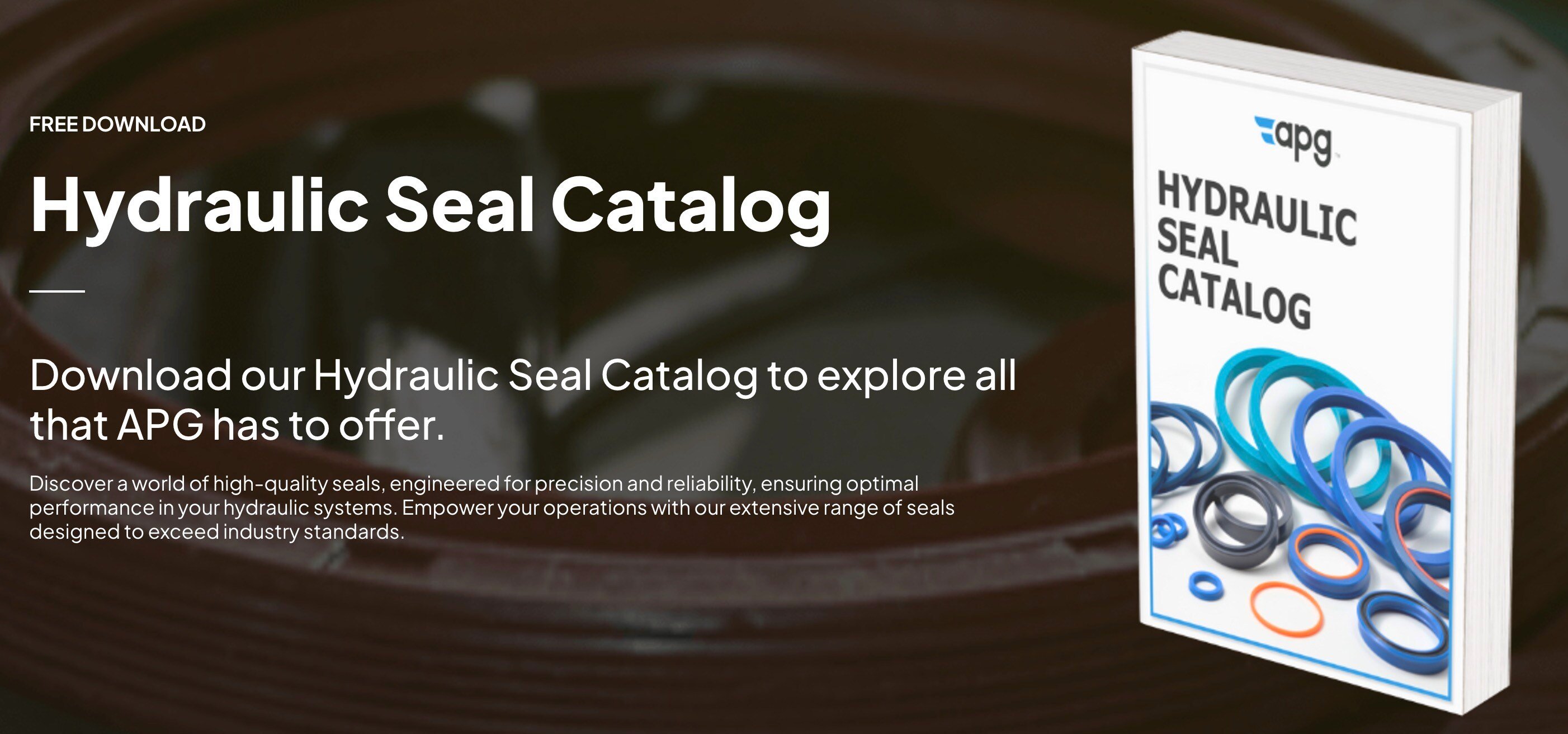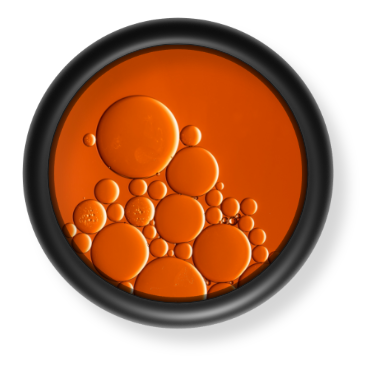The Humble O-Ring: A Small Component with a Big Impact
Though small and seemingly simple, the O-ring is a critical component in a wide range of industries, ensuring the safe, efficient, and reliable operation of systems that depend on sealing fluid or gas. When selected and installed properly, O-rings can provide a leak-proof barrier, preventing the unwanted escape of fluids and gases, thus protecting both equipment and the environment. However, choosing the right O-ring is no trivial matter. Factors like material, size, durometer (hardness), and application environment must all be carefully considered to ensure long-lasting performance and safety.
In this post, we’ll explore the essential role O-rings play in fluid sealing, dive into the variety of elastomers used to manufacture them, and look at some of the most common materials, including silicone, nitrile, fluoroelastomers, and more. Understanding how to match the right O-ring to the right application is key to solving fluid sealing challenges across industries.
- O-Rings in Industry: The Unseen Hero
- The Versatility of O-Ring Materials
- Silicone: The Temperature and Chemical Resistance Champion
- Nitrile (Buna-N): The General-Purpose Elastomer
- Fluoroelastomers (Viton®): The High-Performance Option
- Ethylene Propylene: Ozone and Steam Resistant
- Urethane (Polyurethane): Strength and Durability
- APG: Your Trusted Partner for Industrial Fluid Sealing
- Conclusion: The Critical Role of O-Rings
O-Rings in Industry: The Unseen Hero
At first glance, an O-ring might seem like a simple rubber ring. But when compressed between two surfaces, it creates a tight, water- and air-tight seal that can prevent leaks in even the most demanding environments. O-rings are used in virtually every industry that requires fluid or gas containment, from aerospace to automotive to medical devices. Without them, systems would fail, processes would break down, and safety would be compromised.
The real challenge lies in selecting the right O-ring for the job. It’s not just about choosing any rubber ring. The material, size, durometer, and compatibility with the fluids or gases being sealed must all be considered. Choosing the wrong O-ring can result in leaks, premature wear, and system failure, leading to costly repairs and potential safety hazards.
The Versatility of O-Ring Materials
The versatility of O-rings stems from the wide range of elastomers (rubber-like materials) available. Each elastomer offers unique properties that make it ideal for different industrial applications. Whether you're sealing a pump in a chemical plant or a valve in a car engine, the material choice will significantly impact the O-ring’s performance. Below, we explore the key elastomers used to manufacture O-rings and highlight the industries they are best suited for.
Silicone: The Temperature and Chemical Resistance Champion
Silicone is one of the most versatile elastomers used in O-ring applications. Known for its excellent resistance to extreme temperatures, ozone, UV light, and a wide variety of chemicals, silicone is ideal for applications where environmental resistance is critical.
Silicone O-rings are especially useful in industries like:
- Medical & Pharmaceutical: Silicone O-rings are non-toxic, highly flexible, and resistant to extreme temperatures, making them ideal for use in medical devices and pharmaceutical manufacturing.
- Water Systems: Their resistance to water and high temperatures makes silicone O-rings perfect for sealing water systems and plumbing.
- Semiconductor & Technology: Silicone’s low outgassing properties are valuable in semiconductor manufacturing where contamination must be minimized.
While silicone excels in static applications, it is less suitable for dynamic sealing, such as in rotating shafts, due to its lower tensile strength and wear resistance.

Nitrile (Buna-N): The General-Purpose Elastomer
Nitrile, or Buna-N, is the most widely used elastomer for O-rings, thanks to its excellent resistance to petroleum oils, fuels, and hydraulic fluids. It also offers superior abrasion resistance and compression set performance, making it a reliable choice for many industries. However, nitrile does have limitations in exposure to ozone and sunlight, which can cause it to degrade over time.
Nitrile O-rings are commonly used in:
- Automotive: Nitrile O-rings are crucial for sealing fuel and oil systems in vehicles.
- Oil & Gas: With its resistance to petroleum products, nitrile is often used in drilling and extraction systems.
- Hydraulic Systems: Nitrile is ideal for high-pressure hydraulic applications where exposure to oil and fluids is a concern.
Despite its impressive performance in many sectors, nitrile should be avoided in environments with high ozone or UV exposure.
Fluoroelastomers (Viton®): The High-Performance Option
For applications that involve harsh chemicals, extreme temperatures, or high vacuum environments, fluoroelastomers like Viton® are the top choice. Viton® O-rings offer exceptional resistance to a wide range of chemicals, including acids, solvents, and fuels, making them ideal for aerospace, automotive, and chemical processing applications.
Viton® O-rings provide:
- Excellent Chemical Resistance: They can withstand a broad spectrum of aggressive chemicals and solvents.
- High-Temperature Tolerance: Viton® can handle temperatures up to 400°F (204°C), which makes it suitable for high-temperature processes.
- Low Compression Set: This means they retain their sealing ability under pressure for longer periods.
Industries that rely on fluoroelastomer O-rings include:
- Aerospace: Sealing in fuel systems, valves, and hydraulic systems.
- Chemical Processing: Seals for aggressive chemicals and solvents.
- Oil & Gas: Seals for harsh petroleum-based fluids.

Ethylene Propylene: Ozone and Steam Resistant
Ethylene Propylene, or EPDM, is a synthetic elastomer that performs exceptionally well in environments where exposure to ozone, steam, acids, and water is common. It is particularly valuable in industries such as aviation and pharmaceuticals.
EPDM O-rings are best for:
- Aerospace: Resistant to Skydrol® fluid, used in commercial aircraft hydraulic systems.
- Pharmaceutical & Medical: Non-toxic and resistant to a wide range of sterilizing chemicals.
- Food & Beverage: EPDM O-rings are often used in food processing applications where sterilization and water resistance are key.
However, EPDM is not suitable for sealing petroleum products.
Urethane (Polyurethane): Strength and Durability
Urethane (Polyurethane) is a highly durable elastomer, known for its excellent resistance to wear, tear, and abrasion. It’s particularly useful in applications that involve high pressure or harsh environments. Urethane O-rings can handle hydraulic fluids, oils, and a variety of chemicals.
Common uses for urethane O-rings include:
- Hydraulic Systems: Seals in high-pressure hydraulic circuits.
- Pneumatic Systems: Ideal for systems that handle air or gas pressure.
- Firearms: O-rings for sealing parts in firearms due to their toughness and resistance to harsh chemicals.
Urethane also offers good resistance to oxygen, ozone, and weathering, making it a versatile material for demanding environments.

APG: Your Trusted Partner for Industrial Fluid Sealing
APG is a leader in providing high-quality industrial fluid sealing solutions. We understand the complexities involved in selecting the right O-ring for your specific application, and we offer a broad range of elastomers, including custom sizes and materials to meet your needs. Whether you’re working in aerospace, automotive, medical, or any other industry, APG is committed to helping you find the ideal O-ring solution to ensure the longevity and reliability of your systems.
To help maximize the lifespan of your elastomer seals, it’s important to store them properly. Visit our Knowledge Base for expert tips on elastomer storage and maintenance. For tailored sealing solutions and more information, contact APG today.
Conclusion: The Critical Role of O-Rings
Though they may seem small and unassuming, O-rings are indispensable in countless industries. Selecting the right O-ring material is crucial to maintaining the safety, reliability, and efficiency of fluid sealing systems. By understanding the unique properties of elastomers like silicone, nitrile, fluoroelastomers, and more, you can make informed choices that lead to longer-lasting and more effective seals. Trust in the expertise of companies like APG to guide you through the complexities of O-ring selection and ensure your fluid sealing needs are met with precision and reliability.









 +1 800-888-5223
+1 800-888-5223
.png)





.png)